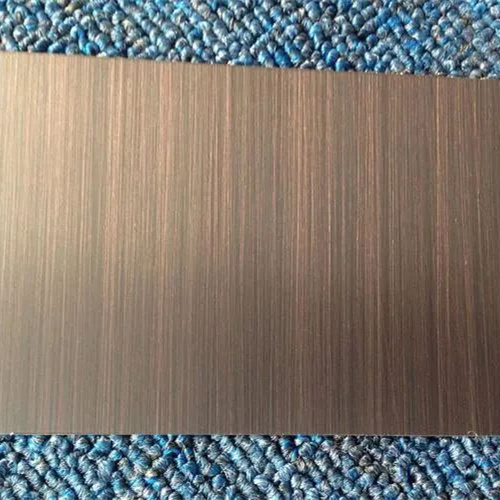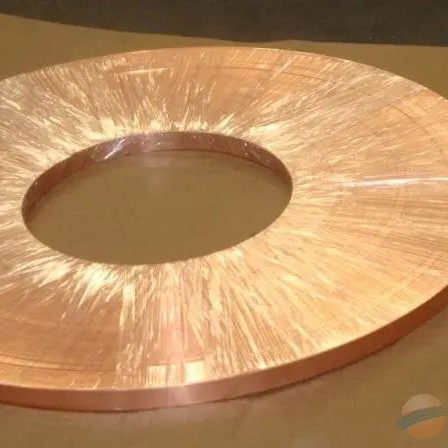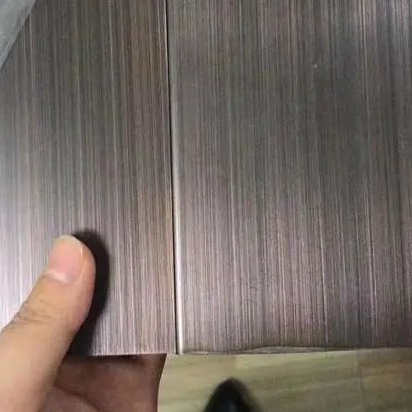What is the relationship between the oxidation blackness and copper wire drawing oil
In the process of copper wire drawing in China's cable industry, there are widespread phenomena such as oxidation black and discoloration, which are more serious in spring and summer. This problem and its relationship, because the temperature of the wire in the drawing process and the friction between the mold directly affect the lubrication effect, we can analyze it from the following aspects: first, the drawing speed and the use temperature; The second is the fat content of drawing oil; The third is how to prevent oxidation black; The fourth is the tensile force.
1. Temperature and drawing speed
The use temperature of the drawing oil and the lubrication effect are mutually reinforcing and have an impact on each other, such as the temperature is too low, the newly added drawing oil is not easy to emulsify, and the particle activity of the emulsion will decrease, which is not conducive to lubrication. On the contrary, the temperature is too high, the oil is easy to decompose, suspended in the emulsion, which reduces the lubrication effect.
If the temperature of the emulsion rises further and no effective measures are taken to control its temperature, the oil film in the deformation zone may break, resulting in a chemical chain break in the drawing oil process formula. In this way, the friction coefficient will inevitably increase greatly, and under the vicious cycle, not only the surface quality of the product will decline, but also the temperature of the emulsion will rise rapidly, resulting in an increase in the scrap rate.
Therefore, maintaining the cooling state of the high-speed drawing emulsion is not negligible. The temperature should be controlled below the breaking point of the oil film, and the cooling tower or heat exchanger should be used to balance the temperature.
2. Fat mass
The so-called fat amount can be simply understood as the thickness of the oil film formed in the deformation area during the wire drawing process. Too much fat in the copper wire drawing oil will make the oil film formed in the deformation area during the wire drawing process too thick, resulting in the following adverse conditions:
A, the oil film is too thick, pulled out of the copper wire lost the surface gloss
B, causing the oil film local uneven and incomplete, resulting in increased direct contact area, increase friction and pull out of the product surface with oil spots.
C. In addition, the fat content of the emulsion is too high, some of it will free out, causing the emulsion to layer and adhere to the copper powder, suspended on the emulsion, sticking the mold hole, causing blockage of the mold eye, and then breaking the line. Serious will directly lead to the deterioration of the lubricating oil, resulting in the replacement of the whole tank, resulting in losses.
If the fat content of the drawing liquid is too low, the oil film must be very thin, or a complete oil film cannot be formed. In the drawing process, it is easy to cause rupture, which leads to the stretched copper wire and the mold contact can not be lubricated, increasing the friction force, which will cause the following bad conditions:
A, the tensile force increases, will lead to frequent wire breakage
B, increased friction, heat generation, oil temperature rise, increase fuel consumption
C, resulting in reduced surface quality of the drawn wire
D, mold, tower wheel loss fast, copper powder increase
As a result, When we choose copper drawing oil, we should determine how much fat it needs according to the wire diameter of the specifications pulled by the factory. The concentration of copper drawing oil is different from the content of fat. Generally, the fat content of copper drawing oil is between 70-80%, that is, the fat content of every 100 kilograms of drawing oil is only 70-80 kilograms, so some use units are recommended by the instruction manual When the concentration of emulsified oil is adjusted, according to 10kg of oil and 90kg of water that it contains fat and has reached 10%, it is actually wrong, the actual fat content is only 7 to 8kg, so it is necessary to use the sugar meter to detect its fat content.
The method is: at room temperature 24℃, add 10ml of brushed oil crude oil into 100ml stopper cylinder, then add distilled water to the scale of 100ml, plug the cover of the cylinder, and shake up and down about 20 times. After it is fully and evenly filled, take the sugar meter, clean the mirror with clean water and wipe it dry with soft paper, drop a few drops of a good uniform emulsion on the mirror, clean it once, wipe it off. Then drop 1-2 drops on the sugar meter mirror, observe the light, the reading multiplied by 10 times is the fat content of the copper wire drawing oil.
Third, how to prevent oxidation black
There are many reasons for copper wire blackening and oxidation:
(1) The area of the wire-drawing emulsion oil pool is small, the return pipe is short, and it is sealed, resulting in slow heat dissipation and high temperature of the emulsion oil.
(2) It is caused by copper wire annealing. First, the cooling water is generally used in tap water and groundwater, because the water quality is not the same everywhere, the PH value of the water quality in some areas is low, only 5.5-5.0, the antioxidant oil film in the original emulsion is cleaned off, and the annealed copper wire is easy to oxidized and black; Second, the finished copper wire drawn by the ordinary wire drawing machine is annealed on another annealing line, and the cooling water does not use antioxidants, the antioxidant time is short, and oxidation blackening will soon occur;
(3) Some old plants still use the annealing cylinder to annealing, the following reasons will also cause oxidation, black: first, the annealing cylinder nut is not tightened, after flushing carbon dioxide or high purity nitrogen leakage; Second, when the temperature of the copper wire out of the cylinder is too high, exceeding 30℃; Third, the drawing emulsion is not maintained enough, and the PH value is too low; These conditions are more common in the summer when the temperature is high, the emulsion will be used continuously, and the loss is faster when the temperature is high, if the new crude oil is not added in time, the fat content is very small, coupled with the high temperature, the temperature of the emulsion may also exceed 45 ° C, it is easy to cause oxidation black.
(4) Another situation is that due to the current widespread use of high-speed wire drawing, its speed has been increased, the relative heat dissipation time has been reduced, bringing a certain space and time to oxidation, therefore, it is recommended that manufacturers pay more attention to the fat content of the emulsion, the use of temperature, PH value, etc., is appropriate, spring yellow mold rain season bacterial reproduction faster, can use sterilization and mildewproof agents, Summer antioxidants can be used to solve the oxidation, blackening problem is not a problem.
Fourth, tensile force
In the normal operation process of drawing, the higher the drawing speed, the easier it is to bring the emulsion into the die hole and increase the pressure of the lubricating fluid in the die. As a result, the thickness of the lubricating film is increased, thereby reducing the coefficient of friction. During the stretching process, the greater the load, the greater the pressure. As a result, the emulsion is easily extruded from the deformation zone, which reduces the thickness of the lubricating oil film, increases its actual contact area, and thus increases the friction coefficient.
The effect of tensile force on the lubrication effect: the greater the tensile force, the greater the extreme pressure generated when drawing the same weight or length of wire, the more work is converted into heat. At this time, the temperature rise of the wire will be greater.
Therefore, the factors affecting the tensile force will be deformation resistance, mold damage and continued stretching will increase the tensile force. The greater the tensile force, the greater the friction, the friction loss is also increased, transformed into heat energy, so that the surface temperature of the wire leads to the increase of the emulsion oil temperature, which can not be ignored.








